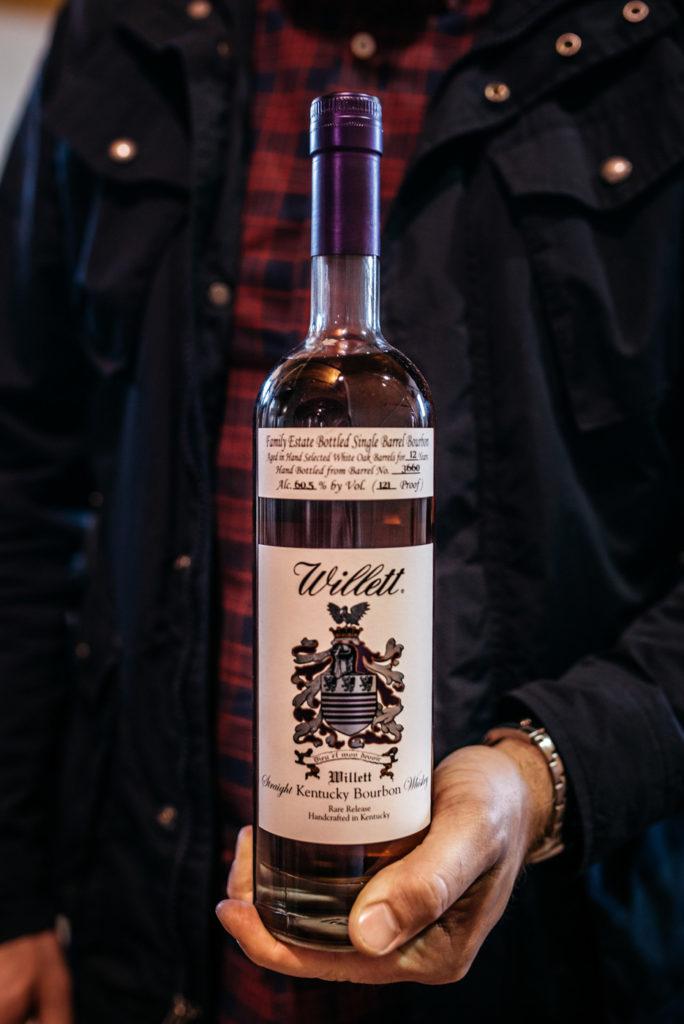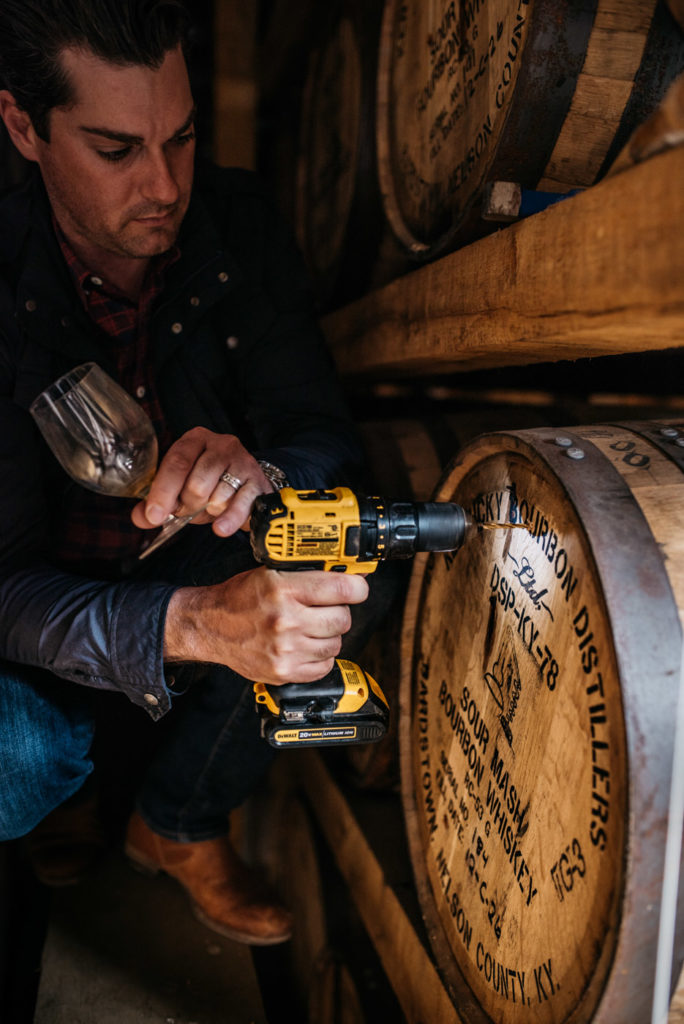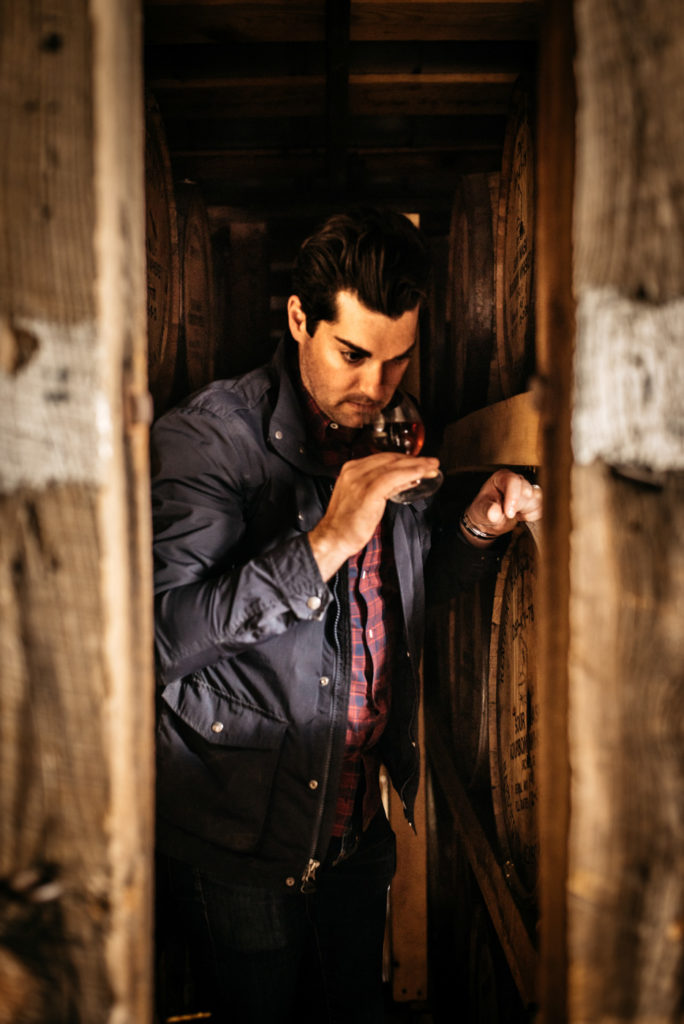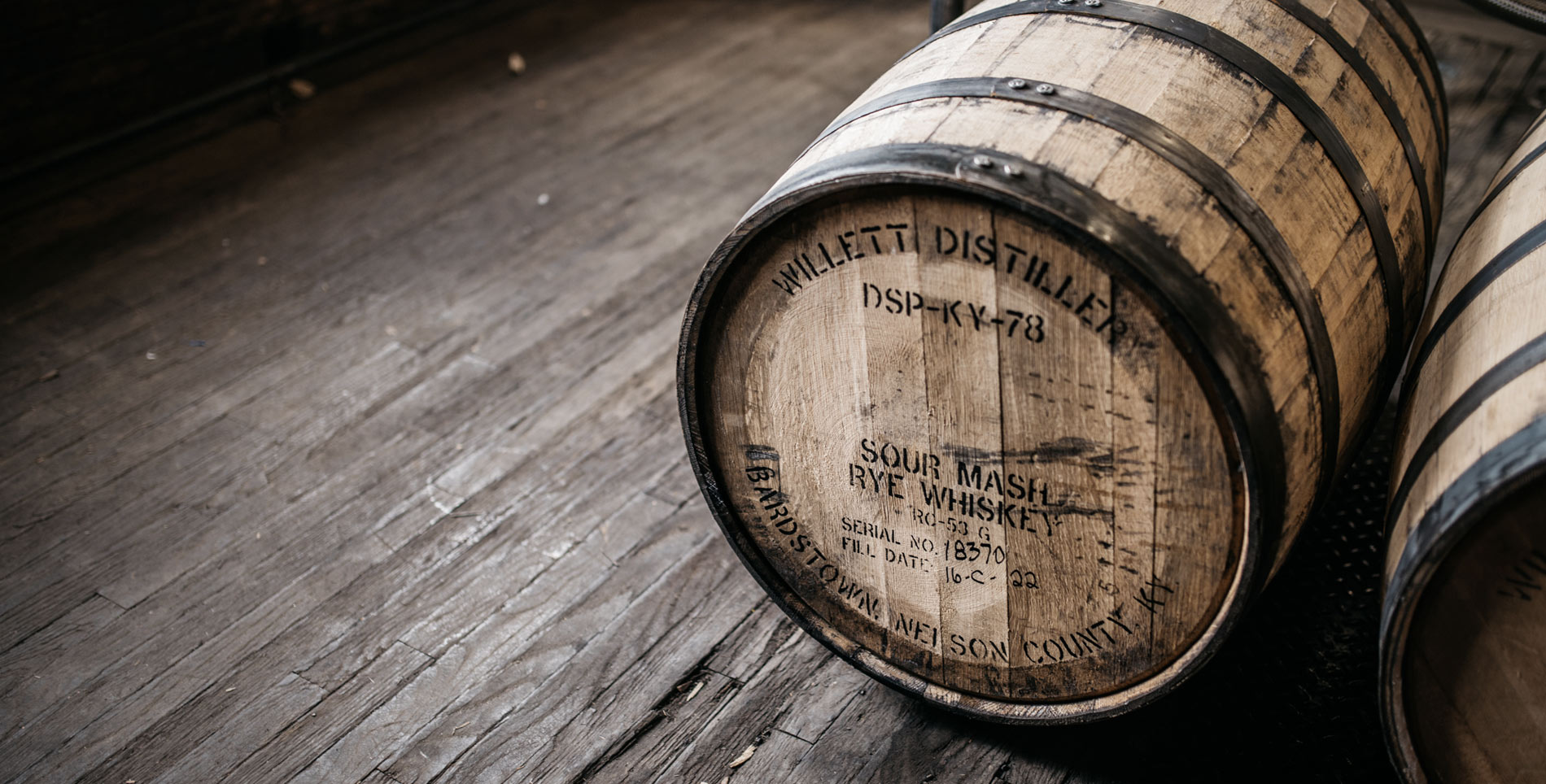Off the Menu
Editor’s Note: “Off the Menu” is a series of spin-off stories to the Life & Thyme print magazine. Today’s entry stems off of our profile on Drew Kulsveen, Master Distiller for Kentucky’s Willett Distillery. Be sure to read his full story in our Heat Issue.
For those of us whose go-to bar beverage is a Kentucky mule, drinking whiskey is anything but new. But perhaps you’re looking to find a deeper appreciation for the beloved spirit. Drinking whiskey and tasting whiskey are two different tasks, and the latter requires your full attention and participation to fully experience a single whiskey.
During my visit to Willett Distillery, I observed the motions of Master Distiller Drew Kulsveen as he sipped his bourbon from the barrel. The conversation paused, and even though he had done this thousands of times, he still approached his glass with care and intention. His eyes focused far away as if he were recalling a memory from long ago. And when he passed me the glass, I followed his lead.



——
Tasting whiskey is similar to tasting wine. It’s alcohol. The chemical makeup is altered the moment you open the bottle; it opens up as it reacts to oxygen. The motions of tasting are the same: you observe the look, smell and flavor.
To get a good feel for how the flavors can vary, choose three to five different brands. Try a Kentucky bourbon, a Carolina rye, or a Tennessee moonshine. Bonus points for independent producers, who allow more variation in their product. Pour a shot of each into a clear, tulip-shaped glass. A snifter is ideal, but a wine glass works fine too. As long as the rim is more narrow than the bowl to funnel the odor, and the glass has a stem for handling.
Start with the glass with the lightest colored liquid. While not totally foolproof, color can often indicate intensity in aroma and flavor. If you start out with something that’s been oaked for 18 years, you won’t be able to detect the subtleties of an unaged moonshine.
Swirl the liquid around. Notice how it clings to the glass, leaving streaks or legs behind. Take note of the color and opaqueness. Does it resemble straw, rust or caramel? Or is it as clear as water? How does it glow in the light?



Get your nose in the glass. Open your mouth to activate your entire palate. Take a gentle, steady breath in through your nose, being careful not to sniff too hard, and exhale steadily back out. You may not smell anything other than alcohol on the first go. Take a cleansing breath and try again. As your nose gets used to the smell of alcohol, you’ll be able to smell underneath it. Continue swirling the glass to aerate the whiskey. Take another sniff. Already it should be opening up. You may get a general hint of sweetness or smoke. Take a breath away from the glass, and keep coming back to it until you get more specific ideas of its perfume. Try to recall the fragrances with your nose out of the glass. Allow it to bring back memories. What do these aromas remind you of? So it smells sweet. Is it butterscotch or vanilla? Do you like the way it smells?
![]() Take a healthy sip, holding it in your mouth. Chew on it. Swish it around your palate for 10 seconds. Get it in both cheeks, on your gums, between the teeth, coat the roof of your mouth and your tongue from the tip to the back. If you’re not keen on sipping the whiskey neat, you can add a splash or two of still water at room temperature to take the edge off. Exhale out of your mouth. Notice how the heat feels immediate and fiery on your lips and tongue, but more radiant in your stomach and esophagus. What do you taste on your breath? There might be some spice there, such as black pepper and clove. Maybe there’s musk, like leather or tobacco. Floral, nutty and citrus notes are common. You might be able to detect the flavor of the oak or the grains. Whiskeys can even have some strange notes like fresh mowed grass and damp library.
Take a healthy sip, holding it in your mouth. Chew on it. Swish it around your palate for 10 seconds. Get it in both cheeks, on your gums, between the teeth, coat the roof of your mouth and your tongue from the tip to the back. If you’re not keen on sipping the whiskey neat, you can add a splash or two of still water at room temperature to take the edge off. Exhale out of your mouth. Notice how the heat feels immediate and fiery on your lips and tongue, but more radiant in your stomach and esophagus. What do you taste on your breath? There might be some spice there, such as black pepper and clove. Maybe there’s musk, like leather or tobacco. Floral, nutty and citrus notes are common. You might be able to detect the flavor of the oak or the grains. Whiskeys can even have some strange notes like fresh mowed grass and damp library.
Tasting is a very personal experience. You may not find the same flavors in your glass that the person sitting next to you does. In fact, your associations could totally contradict each other and neither of you would be wrong. Every individual’s unique perspective will play a part in what they find. There is no correct flavor profile. And really, who needs to be “correct” here? After all, the reason you’re diving this deep is for the love of whiskey. It should, overall, be enjoyable.

 Before moving on to the next brand, revisit your glass. Smell it just like you did the first time. How has it changed? Some of the head notes may have dissipated, as well as the strength of the alcohol fumes. It might be easier to detect the heart notes. Some new aromas may be revealing themselves and others may seem more precise now that they’ve touched your tongue. Sip it again, letting it hit your entire palate before swallowing. The flavors may be more complex now. The heat may leave you with a full-body buzz.
Before moving on to the next brand, revisit your glass. Smell it just like you did the first time. How has it changed? Some of the head notes may have dissipated, as well as the strength of the alcohol fumes. It might be easier to detect the heart notes. Some new aromas may be revealing themselves and others may seem more precise now that they’ve touched your tongue. Sip it again, letting it hit your entire palate before swallowing. The flavors may be more complex now. The heat may leave you with a full-body buzz.
The key is to take your time, and don’t let yourself get overwhelmed. It may be helpful to write down the flavors as you go, comparing the differences in each bottle and logging them for future dinner pairings. Or maybe you’d just prefer to sip with a group of friends, calling out your discoveries until you can’t articulate any longer.
Happy tasting.
——
Icons by gayatri and lastspark from the Noun Project







Our comments section is for members only.
Join today to gain exclusive access.